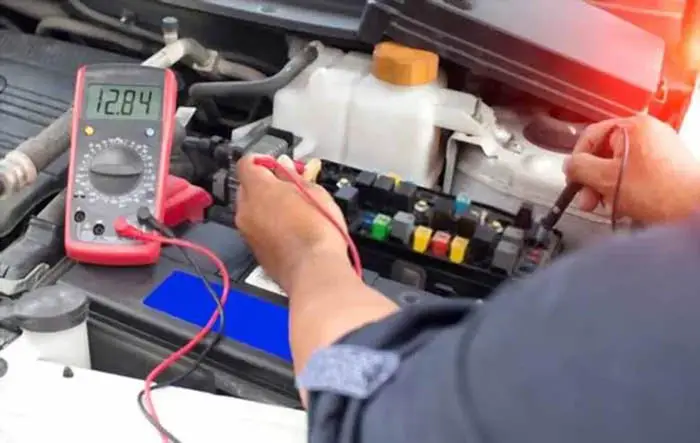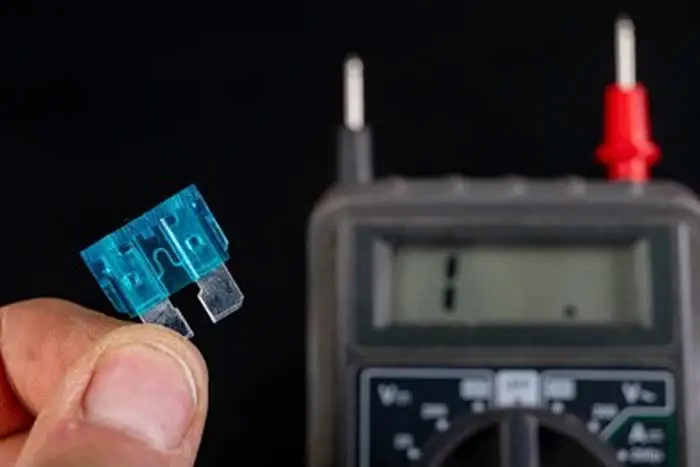
“You Don’t Need A Multimeter To Check Your Car’s Fuses!”
A fuse is a type of electrical device that is used to protect against overcurrent in an electrical circuit. Fuses are designed to “blow” or “open” when too much current flows through them, thus interrupting the flow of electricity and preventing damage to the circuit. A broken fuse can cause significant electrical problems, that’s why it’s important to regularly check and replace your car’s fuse for safe and smooth driving.
It is usually made of metal or ceramic material that melts when it gets too hot, which breaks the circuit and prevents further flow of current. The automobile fuse is placed in between the battery and the electrical parts that it is protecting.
If you’re like most people, you probably don’t have a multimeter just lying around the car. That’s okay! You can still check the fuse of your car in the absence of the multimeter. Read on to know how to check the fuse of the car without the aid of a multimeter. In this article, we will discuss two methods to test a car fuse not employing the multimeter.
Related Post: How To Check Fuses Without Removing Them: A Simple Methods
How To Test Car Fuses With A Multimeter: 2 Simple Methods
How To Test A Car Fuse Without A Multimeter: 4 Ways To Test
Assuming that you do not have a working multimeter to check a car fuse, there are still a few ways that you can check to see if the fuse is blown. There are several ways to check an automotive fuse except for a multimeter, despite the fact that many people use a multimeter to test fuses.
If you find that your car accessories have stopped working, it may be a due to a broken fuse. Checking a fuse without a multimeter is quite easy and only takes a few minutes. Below is the step-by-step procedure to test an automotive fuse if you don’t have access to a multimeter.
Method 1. Visual Inspection
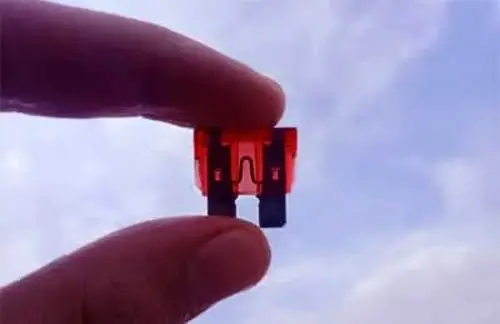
This method of testing the fuse of the car without multimeter involves checking the metal element of the fuse visually out of the fuse box. If the fuse is in good condition it will have a metal element bridge from one end to another encased in semi-transparent plastic housing, which is visible from the outside, where you can detect a broken fuse.
On the other hand, a blown fuse has a broken metal element bridge or fuse link between two terminals. To know how to inspect the fuse visually first safely remove the fuse from the circuit through a plier or fuse puller and visually inspect each side of the fuse under good light.
You will see a metal bridge across two terminals if you could see it. It means the fuse is good.
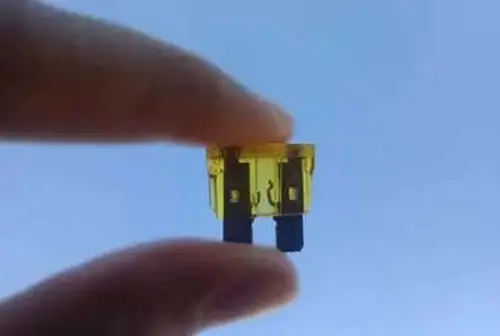
But, if you see the fuse doesn’t have a complete path due to a broken metal strip then you need to replace the fuse with a new one.
One important point you need to know is that it is easier to spot a break in the metal element of a higher current rating fuse than a lower current rating.
I have already mentioned this point in my article the metal element size varies based on the current rating of the fuse. The higher the current rating the more width the fuse metal element has. It means you can quickly figure out a 30 amp broken fuse than a 0.5 amp broken fuse.
This is an Alert:
Bear in mind, some glass fuse is blackened due to the blowing, and it is hard to spot broken metal elements in the fuse due to its dirty housing case.
Related Post: What Is A Car Fuse, How It Works: Ultimate Guide
Method 2. Swapping The Fuse
This is another method of testing an automotive fuse with a multimeter if you don’t have one. In this method, you can check an automotive fuse apart from multimeters by swapping. You can quickly identify a good or bad fuse by exchanging a good fuse with a suspected fuse in a good working circuit within the car.
First, find out a good working circuit of the amperage rating fuse similar to the suspected fuse.
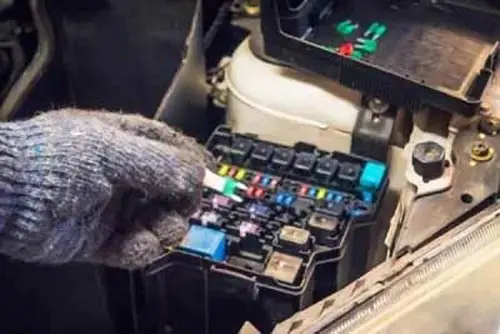
Remove the suspected fuse to see if it’s working and put it in a good working circuit. Now, check whether the circuit works with the suspected fuse. It means the fuse is good. The problem might be somewhere else in the circuit.
If the good circuit doesn’t work with the suspected fuse. It means the fuse has blown. You need to check the owner’s manual or consult a mechanic for further assistance.
This Is A Caution
Don’t put the good fuse in the suspicious fuse’s circuit, you might blow the fuse due to overload or there is the chance of a short circuit.
Method 3. Testing A Car Fuse With A Continuity Tester
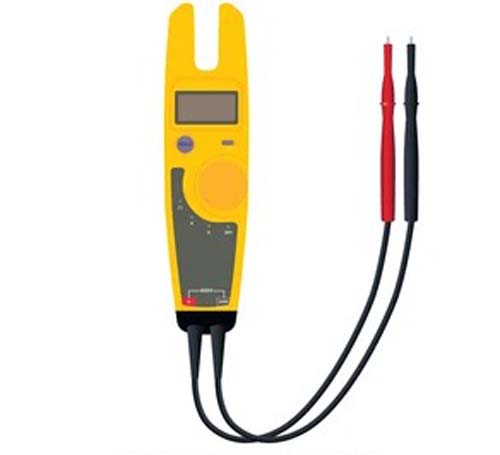
Here is a step-by-step guide on Testing An automotive Fuse With A Continuity Tester.
- Locate the fuse box in your car and identify the fuse you want to test.
- Turn off the car’s ignition, and there is no need to remove the fuse you want to test.
- Connect one end of the continuity tester to the metal prongs on the fuse.
- Touch the other end of the wire of the continuity tester to the metal contact points on the fuse box.
- The fuse is functioning properly if the continuity tester lights up or makes a beeping sound. If there is no response, the fuse is likely blown due to an overload of current, and replace it with a new fuse.
Method 4. Testing A Fuse With A Test Light Bulb

To test a fuse with a test light or test lamp, begin by turning on the suspected circuit. Next, connect the negative pole of test lamp to the body frame or the battery negative terminal and the second pole to the small metal tabs on top of the fuse one by one. You can easily test the fuse by looking at the test lamp flashing.
If it flashes in both terminals, the fuse is good. If it only flashes on one terminal and not the other, then you need to replace the blown fuse but be careful to use a fuse of the same current rating.
Why Should You Test a Fuse

Testing a fuse is an important step in maintaining the proper functioning of your vehicle’s electrical system. Fuses are designed to protect electrical components and circuits by interrupting the flow of electricity when excessive current is present. By testing a fuse, you can determine if it is functioning properly and if it needs to be replaced.
When you test a fuse, you are checking the current, which is the measure of the flow of electricity. If the current is too high, it can cause damage to the electrical parts in your vehicle and even cause a fire. A blown fuse is a sign that too much current is flowing through it and it needs to be replaced.
If a fuse is blown, it is likely that the fuse has reached its limit and can no longer safely conduct electricity. The replacement of the old fuse must be of the same size and type of fuse to ensure the safety and proper functioning of the electrical parts.
The Importance of Testing a Fuse Without a Multimeter
Test fuses are crucial in maintaining the proper functioning of your vehicle’s electrical system. A blown fuse can prevent electrical devices from working, cause lights to flicker or fail and even start a fire. Testing a fuse except for having a multimeter on hand is simple, you can hold the fuse up to a light source and inspect the metal strip/filament by looking at the fuse.
If the strip appears to be intact, the fuse is in good working condition. If the strip is broken or burned, the fuse is likely blown and needs to be replaced. Also, check the fuse by shaking, if you can hear a rattling sound inside, that means the fuse is blown and needs to be replaced. If unsure, always consult the vehicle’s manual or a professional mechanic.
FAQs
You can use a multimeter and test it in the ohm range to see if it blows, if the reading shows no continuity, the fuse is blown.
While it is uncommon, it is still possible for a fuse to go bad without blowing. You can use a multimeter to see if the fuse blows when a certain amount of current is passed through it.
You can use multimeters to check if an electrical part is in good working order. Simply, touch one lead of the multimeter to the component’s terminal and the other to the ground, if the reading shows continuity, it’s likely in good working order.
To determine if a surge caused a fuse to blow, inspect the fuse for visible signs of damage, check surrounding electronics and appliances for damage, investigate the power source for fluctuations, consider installing a surge protector, and consult an electrician if necessary.
Simply remove the fuse and replace it with the metal strip. The procedure is done by looking if it is blown due to overcurrent. See if it is blown, it functions just like a fuse.
Sign Up



